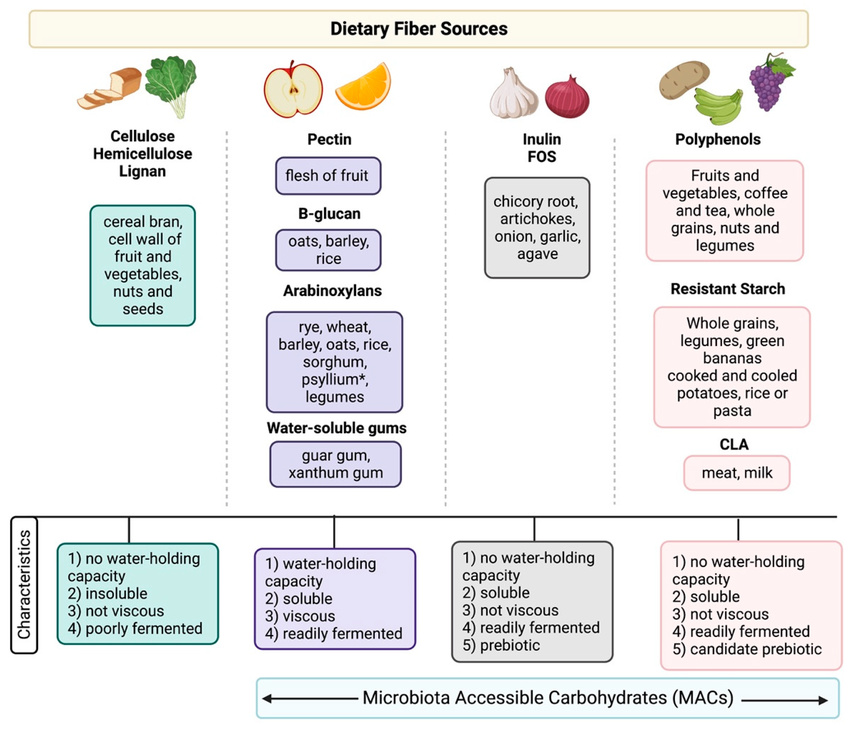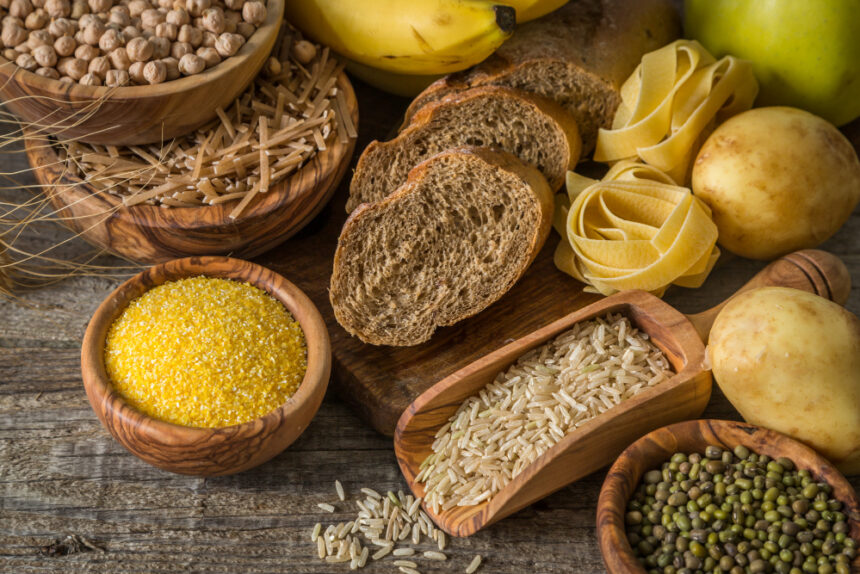Introduction to the Role of Dietary Fiber in Heart Health
In today’s fast-paced world where processed foods and sugary drinks dominate many people’s daily diets, the simple, humble nutrient known as dietary fiber often gets overlooked. Yet, dietary fiber plays a critical role in maintaining overall health and, more specifically, in protecting the heart.
While it may not have the flashiness of protein or the popularity of low-carb fads, fiber is a true nutritional powerhouse. It supports digestion, regulates blood sugar, aids weight management, and has profound effects on cardiovascular health. The story of fiber is not just about digestion; it’s about prevention, longevity, and maintaining a quality life.
Fiber, especially the kind found in fruits, vegetables, legumes, and whole grains, has shown remarkable benefits in reducing the risk of heart disease—the number one cause of death globally. Despite its importance, studies consistently show that most people consume far less than the recommended daily amount of dietary fiber.
This lack of fiber could be silently harming heart health. In this in-depth guide, we will explore how dietary fiber functions as a natural protector of your cardiovascular system, understand the science behind it, and learn how to incorporate it into your daily routine for lasting benefits.
What is Dietary Fiber?
Dietary fiber is the part of plant foods that our bodies cannot digest or absorb. Unlike fats, proteins, or carbohydrates, which our bodies break down and absorb, fiber passes relatively intact through the stomach, small intestine, and colon, and then exits the body. It’s found mainly in fruits, vegetables, whole grains, and legumes.
There are two main types of fiber: soluble and insoluble. Soluble fiber dissolves in water to form a gel-like substance. It can help lower blood cholesterol and glucose levels. Common sources include oats, peas, beans, apples, citrus fruits, carrots, and barley.
Insoluble fiber, on the other hand, promotes the movement of material through your digestive system and increases stool bulk, so it’s helpful for those who struggle with constipation or irregular stools. This type is found in whole-wheat flour, wheat bran, nuts, beans, and vegetables like cauliflower, green beans, and potatoes.
While both types of fiber are beneficial to your health, soluble fiber is especially important when it comes to heart health. Its ability to bind with cholesterol and help remove it from the body has made it a focal point in nutritional science.
The Connection Between Dietary Fiber and Heart Health
Heart disease, which includes conditions like coronary artery disease, high blood pressure, heart attacks, and stroke, is often linked to poor diet and lifestyle choices. Fortunately, one of the easiest and most effective ways to reduce the risk of heart disease is by increasing your intake of dietary fiber. Multiple studies have demonstrated that people who consume more fiber tend to have a lower risk of cardiovascular disease. But why is this the case?
Soluble fiber helps to reduce levels of LDL (low-density lipoprotein), commonly known as “bad” cholesterol, without affecting HDL (high-density lipoprotein), the “good” cholesterol. By lowering LDL cholesterol, soluble fiber helps prevent the buildup of plaque in the arteries—a condition known as atherosclerosis, which can lead to heart attacks and strokes.
Furthermore, high-fiber diets are often associated with lower blood pressure and reduced inflammation in the body. Inflammation and hypertension are both significant contributors to heart disease. By moderating these factors, fiber supports long-term heart function and decreases the risk of developing chronic cardiovascular conditions.
Scientific Evidence Supporting Fiber’s Cardiovascular Benefits
Research continues to confirm that increasing dietary fiber intake is associated with a decreased risk of cardiovascular events. One significant meta-analysis published in the British Medical Journal analyzed data from multiple observational studies and found that for every additional 7 grams of fiber consumed per day, there was a 9% reduction in the risk of coronary heart disease.
Another important study from the Harvard School of Public Health found that women who consumed more than 25 grams of fiber daily had a 40% lower risk of heart disease compared to those who consumed less than 10 grams. These are substantial numbers, and they speak volumes about the preventative power of dietary fiber.
In addition to observational studies, clinical trials have also shown positive results. Patients who added soluble fiber to their diets experienced reductions in total and LDL cholesterol levels. These changes were noticeable within just a few weeks, reinforcing the idea that dietary fiber can have immediate as well as long-term cardiovascular benefits.
Dietary Fiber and Cholesterol Reduction

One of the most well-established benefits of dietary fiber is its ability to lower cholesterol levels. Soluble fiber, in particular, binds with bile acids in the digestive system and removes them from the body through waste. Since bile acids are made from cholesterol, the body pulls cholesterol from the bloodstream to produce more bile acids, thereby lowering overall cholesterol levels.
Incorporating high-fiber foods like oats, beans, and lentils into your diet can significantly improve your lipid profile. In fact, the U.S. Food and Drug Administration (FDA) permits food manufacturers to make health claims linking soluble fiber from foods like oats to a reduced risk of heart disease, provided these foods are part of a diet low in saturated fat and cholesterol.
What makes this particularly interesting is that dietary changes are among the most accessible ways for individuals to take control of their health. You don’t need expensive supplements or prescription drugs—just consistent, mindful choices at the grocery store and the dinner table.
Blood Pressure, Inflammation, and Fiber Intake
Beyond its cholesterol-lowering capabilities, dietary fiber also plays a role in regulating blood pressure. High blood pressure or hypertension is one of the most significant risk factors for heart disease and stroke. Several studies have shown that diets high in fiber can lead to modest but meaningful reductions in both systolic and diastolic blood pressure.
The mechanisms behind this are still being studied, but researchers believe that fiber helps improve the elasticity of blood vessels and reduces arterial stiffness. These effects contribute to better circulation and lower blood pressure readings.
Additionally, fiber-rich diets are known to reduce systemic inflammation—a condition that contributes not only to heart disease but also to diabetes and cancer. Soluble fiber supports the growth of beneficial gut bacteria, which in turn produce short-chain fatty acids (SCFAs). These SCFAs have been found to have anti-inflammatory properties, helping to calm the immune system and reduce inflammatory markers in the body.
How Fiber Supports a Healthy Weight and Why That Matters
Another reason dietary fiber is so vital for heart health is its role in weight management. Being overweight or obese is a major risk factor for cardiovascular disease, and fiber can play a substantial part in achieving and maintaining a healthy weight.
High-fiber foods are generally more filling than low-fiber foods, which means you’re likely to eat less and stay full longer. This satiety effect helps control calorie intake without the need for restrictive dieting. Soluble fiber, in particular, forms a gel-like substance in the gut that slows digestion and helps regulate hunger hormones. Over time, this can lead to weight loss or help prevent weight gain—both of which are beneficial for heart health.
In addition, fiber helps regulate blood sugar levels, which is especially important for people with insulin resistance or type 2 diabetes. Stable blood sugar prevents energy crashes and cravings, contributing further to better dietary choices and weight control.
Daily Fiber Recommendations and How to Meet Them
Despite the many benefits of dietary fiber, the average adult falls short of the daily recommended intake. The American Heart Association recommends at least 25 grams per day for women and 38 grams for men. Unfortunately, most people consume only about 15 grams per day—far below the suggested levels.
Achieving these goals is possible with a few simple dietary adjustments. Starting your day with a bowl of oatmeal topped with berries and flaxseeds is a great way to add soluble fiber. Including legumes like lentils and chickpeas in your lunch or dinner can significantly boost your intake. Swapping white bread for whole grain and choosing brown rice instead of white are small changes that can add up over time.
Even snacks can be fiber-rich. Consider raw vegetables with hummus, a handful of almonds, or a piece of fruit instead of processed options. By consciously choosing high-fiber foods, you can easily meet or even exceed the recommended daily intake.
Challenges to Increasing Fiber and How to Overcome Them
While the benefits of fiber are well-documented, many people struggle to incorporate more of it into their diets. One common issue is digestive discomfort, such as bloating or gas, which can occur when fiber intake is increased too quickly. The key to avoiding these problems is to increase fiber gradually and to drink plenty of water, which helps fiber move through the digestive tract smoothly.
Another challenge is convenience. In a society where fast food and pre-packaged meals are the norm, preparing fresh, fiber-rich meals may seem time-consuming. However, meal planning and simple recipes can make this process easier. Canned beans, frozen vegetables, and whole grain wraps are examples of quick, high-fiber options that require minimal preparation.
Taste preferences also play a role. Some people may not enjoy the texture of high-fiber foods or may be used to the flavors of low-fiber processed products. In these cases, gradual substitutions and creative cooking methods—such as roasting vegetables for added flavor or blending fruits into smoothies—can help bridge the gap.
The Long-Term Impact of a Fiber-Rich Lifestyle
The benefits of dietary fiber aren’t just short-term fixes; they are long-lasting and cumulative. By making fiber a consistent part of your daily nutrition, you are investing in long-term cardiovascular health. This approach doesn’t just prevent heart disease—it enhances quality of life by supporting energy levels, reducing illness, and promoting longevity.
In cultures known for high life expectancies, such as in parts of the Mediterranean and Japan, diets are naturally high in fiber due to a reliance on plant-based foods. These populations often experience lower rates of heart disease, further underscoring the global evidence for fiber’s protective effects.
Making Dietary Fiber Part of Your Heart-Healthy Routine
The evidence is clear: dietary fiber is one of the most powerful natural tools we have to protect heart health. Its ability to lower cholesterol, manage blood pressure, reduce inflammation, control weight, and support blood sugar regulation makes it an all-in-one nutrient that benefits not just the heart, but the entire body.
In a world where many are looking for quick fixes or miracle supplements, fiber reminds us that sometimes the best solutions are the simplest. Real, whole foods rich in fiber have the power to transform your health when consumed consistently and thoughtfully.
Whether you’re looking to prevent heart disease or simply want to feel better every day, making dietary fiber a priority in your meals can yield remarkable results. It’s never too late to make this change, and the heart-healthy benefits are well worth the effort.

